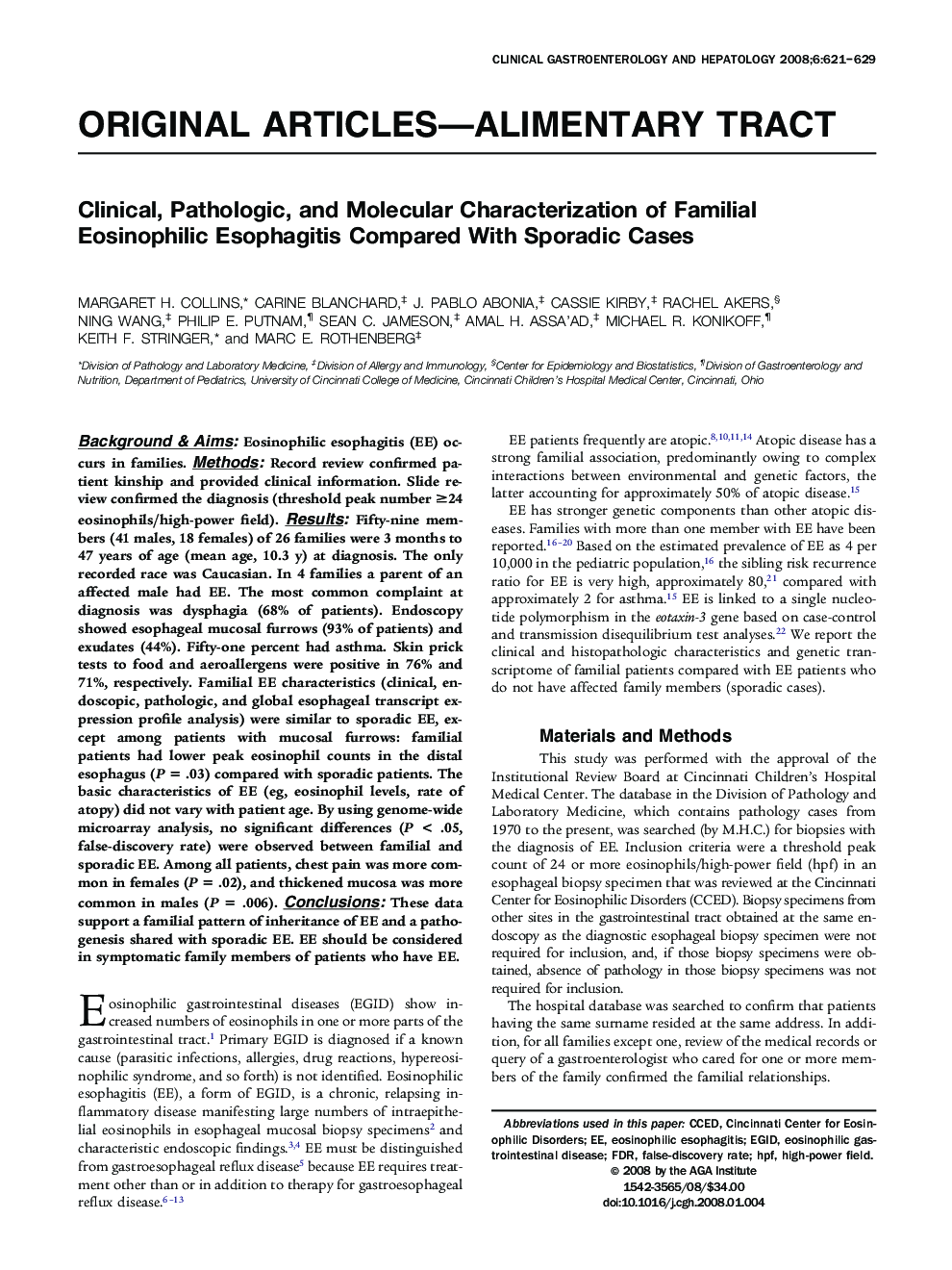| Article ID | Journal | Published Year | Pages | File Type |
|---|---|---|---|---|
| 3285643 | Clinical Gastroenterology and Hepatology | 2008 | 9 Pages |
Abstract
Background & Aims: Eosinophilic esophagitis (EE) occurs in families. Methods: Record review confirmed patient kinship and provided clinical information. Slide review confirmed the diagnosis (threshold peak number â¥24 eosinophils/high-power field). Results: Fifty-nine members (41 males, 18 females) of 26 families were 3 months to 47 years of age (mean age, 10.3 y) at diagnosis. The only recorded race was Caucasian. In 4 families a parent of an affected male had EE. The most common complaint at diagnosis was dysphagia (68% of patients). Endoscopy showed esophageal mucosal furrows (93% of patients) and exudates (44%). Fifty-one percent had asthma. Skin prick tests to food and aeroallergens were positive in 76% and 71%, respectively. Familial EE characteristics (clinical, endoscopic, pathologic, and global esophageal transcript expression profile analysis) were similar to sporadic EE, except among patients with mucosal furrows: familial patients had lower peak eosinophil counts in the distal esophagus (P = .03) compared with sporadic patients. The basic characteristics of EE (eg, eosinophil levels, rate of atopy) did not vary with patient age. By using genome-wide microarray analysis, no significant differences (P < .05, false-discovery rate) were observed between familial and sporadic EE. Among all patients, chest pain was more common in females (P = .02), and thickened mucosa was more common in males (P = .006). Conclusions: These data support a familial pattern of inheritance of EE and a pathogenesis shared with sporadic EE. EE should be considered in symptomatic family members of patients who have EE.
Keywords
Related Topics
Health Sciences
Medicine and Dentistry
Gastroenterology
Authors
Margaret H. Collins, Carine Blanchard, J. Pablo Abonia, Cassie Kirby, Rachel Akers, Ning Wang, Philip E. Putnam, Sean C. Jameson, Amal H. Assa'ad, Michael R. Konikoff, Keith F. Stringer, Marc E. Rothenberg,
